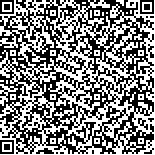| 引用本文: | 程铄棋,伊力哈木·亚尔买买提,谢丽蓉,侯雪扬,马颖.复杂场景下无人驾驶障碍检测算法[J].哈尔滨工业大学学报,2025,57(6):160.DOI:10.11918/202406004 |
| CHENG Shuoqi,YILIHAMU Yaermaimaiti,XIE Lirong,HOU Xueyang,MA Ying.Obstacle detection algorithm for unmanned driving in complex scenarios[J].Journal of Harbin Institute of Technology,2025,57(6):160.DOI:10.11918/202406004 |
|
| |
|
|
| 本文已被:浏览 9次 下载 8次 |

码上扫一扫! |
|
|
| 复杂场景下无人驾驶障碍检测算法 |
|
程铄棋1,2,伊力哈木·亚尔买买提1,2,谢丽蓉1,2,侯雪扬1,马颖1
|
|
(1.新疆大学 电气工程学院,乌鲁木齐 830017;2.新疆露天矿智能生产与管控重点实验室(新疆大学),乌鲁木齐 830017)
|
|
| 摘要: |
| 为解决复杂路况下因目标遮挡及小目标信息缺失导致现有无人驾驶目标检测算法准确率低的问题,提出了基于改进YOLOv8的无人驾驶障碍检测算法(YOLOv8 effectual accurate,YOLOv8-EA)。该算法首先引入快速神经网络作为主干网络,利用部分卷积提取空间特征,保证特征的完整性;其次,利用大内核深度卷积层重构快速金字塔池化层,采用并行多尺度连接的方式融合不同分辨率的自注意力特征,增强模型在复杂环境中的特征提取能力;然后,采用多分支结构和重参数化抑制信息干扰,并通过不断堆叠梯度流的方式提升特征融合能力;最后,基于部分卷积设计小目标检测头以处理小目标像素级特征信息。对比实验结果表明,相较于原模型,上述改进后,模型在性能上均有明显提升,并在检测精度上显著优于其他改进方式。消融实验结果表明,YOLOv8-EA在障碍检测精度方面取得显著提升,在KITTI数据集下,mAP50和mAP50-95分别提升了2.4%和4.7%;采用SODA10M数据集进行二次验证,mAP50和mAP50-95分别提升了1.4%和1.1%,证明YOLOv8-EA算法具有很好的泛化能力。所提算法在处理遮挡目标及小目标时,展现了出色的性能,为无人驾驶系统中的后续决策任务提供了更加可靠的支持。 |
| 关键词: 目标检测 无人驾驶 复杂道路场景 部分卷积 大内核深度卷积层 |
| DOI:10.11918/202406004 |
| 分类号:TP399 |
| 文献标识码:A |
| 基金项目:国家自然科学基金(62362063);新疆维吾尔自治区自然科学基金(2023B01006) |
|
| Obstacle detection algorithm for unmanned driving in complex scenarios |
|
CHENG Shuoqi1,2,YILIHAMU Yaermaimaiti1,2,XIE Lirong1,2,HOU Xueyang1,MA Ying1
|
|
(1.School of Electrical Engineering, Xinjiang University, Urumqi 830017,China; 2.Key Laboratory of Intelligent Production and Control of Open-Pit Mines (Xinjiang University), Urumqi 830017, China)
|
| Abstract: |
| To solve the problem of low accuracy of existing unmanned target detection algorithm caused by object occlusion and small-object information loss in complex road scenarios, this paper proposes an enhanced obstacle detection algorithm based on YOLOv8, named YOLOv8-EA (effectual accurate). The algorithm incorporates a lightweight backbone using partial convolution to preserve spatial feature integrity. A large-kernel depthwise convolutional layer is introduced to reconstruct the pyramid pooling structure, and the multi-scaled self-attention features are fused through parallel connections, which Enhances the feature extraction ability of the model in complex scenarios. Additionally, a multi-branch architecture with reparameterization suppresses noise interference and enhances feature fusion via stacked gradient flow. A small-object detection head based on partial convolution is also designed to improve pixel-level feature extraction for small targets. Experimental results show that YOLOv8-EA achieves notable improvement in detection accuracy compared to the original YOLOv8. On the KITTI dataset, mAP50 and mAP50-95 increased by 2.4% and 4.7%, respectively, while on the SODA10M dataset, gains of 1.4% and 1.1% were observed, which demonstrate the strong generalization ability of YOLOv8-EA. The proposed algorithm shows superior capability in handling occlusion and small-object detection, offering more reliable perception support for unmanned driving systems. |
| Key words: object detection unmanned driving complex road scenarios partial convolution large-kernel depthwise convolution layers |
|
|
|
|







